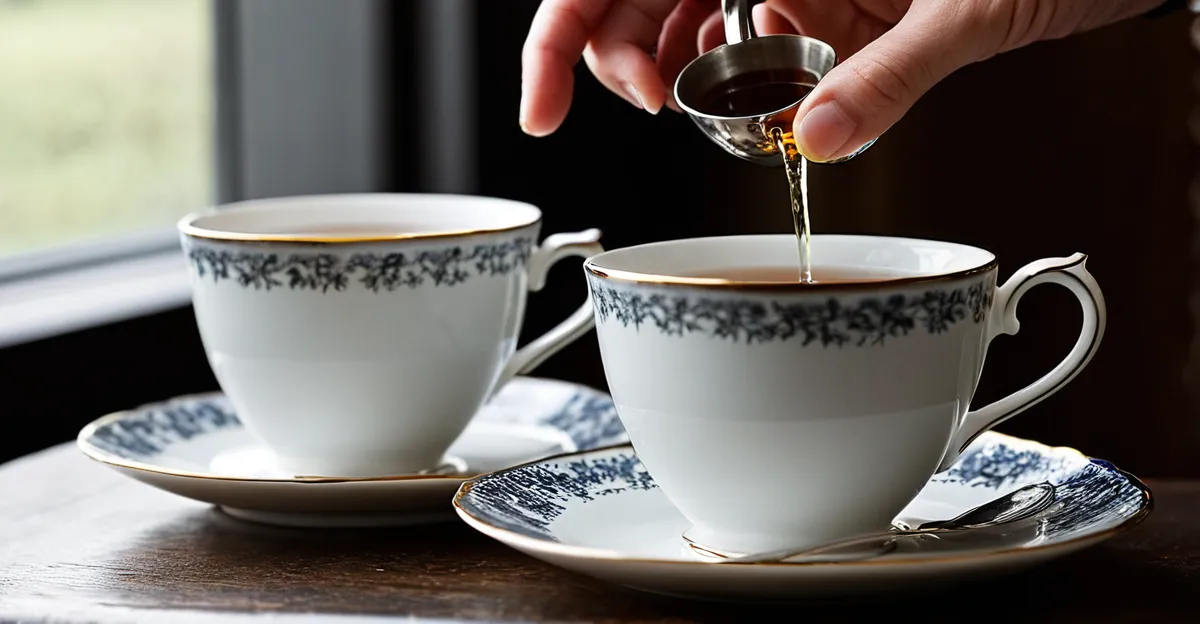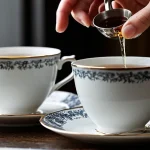Understanding English Tea
English tea holds a special place in both local culture and beyond, symbolizing tradition and refinement. Its significance is deeply rooted in history, where it has been an integral part of social gatherings, influencing customs and occasions.
Types of English Tea
There are notable variations within English tea, such as black tea, which is the most common, and the sophisticated Earl Grey, recognized for its unique blend of black tea with bergamot oil. These types cater to varied palates, offering different aromatic and taste experiences, which are central to the English tea culture.
Additional reading : How can you recreate a traditional full English breakfast at home?
Role in Social Customs and Traditions
The practice of drinking tea in England goes far beyond quenching thirst. It embodies social customs such as afternoon tea, where individuals gather for light snacks and tea, emphasizing the beverage’s role in nurturing relationships and conversation. Moreover, it extends to formal occasions, reflecting class and status, making English tea an emblem of cultural identity and sophistication.
Choosing the Right Tea
When diving into the world of English tea, selecting the best tea for brewing involves understanding certain criteria. Quality is paramount; premium teas often provide a richer, more aromatic experience. Look for brands that emphasize freshness and source reputation, as these can significantly impact the tea’s flavour profile. Comparing loose leaf tea and tea bags, each has its own merits. Loose leaf tea tends to deliver a more robust and refined taste, allowing the leaves to fully expand during brewing. On the other hand, tea bags offer convenience and are perfect for quick, easy preparation without compromising too much on flavour.
In the same genre : What are some classic British afternoon tea treats?
Making an informed choice also depends on preferences in terms of taste and aroma. Some may prefer the distinct elegance of Earl Grey, while others might favour the strength of traditional black tea. To guide your selection, consider trying a few renowned English tea brands, which usually offer a variety of options to suit different palates. In general, starting with a trusted brand can help ensure a satisfying tea experience, whether you’re brewing for an afternoon tea affair or simply enjoying a quiet moment at home.
Water Quality and Temperature
For a truly delightful English tea experience, paying attention to water quality is crucial. Using fresh, filtered water is a fundamental step, as it ensures that no impurities interfere with the delicate flavours of the tea. This aspect cannot be overstressed, as the composition of the water significantly impacts the overall taste and aroma.
Optimal Water Temperature
Understanding the ideal water temperature for brewing is equally important. Typically, black teas require boiling water to help release their bold flavours, whereas more delicate teas, like green tea, benefit from slightly lower temperatures to preserve their balanced character. Adjusting the water temperature based on the type of tea you’re brewing can enhance your experience significantly.
Effects of Water Hardness
Water hardness is another factor to consider. Hard water, with its high mineral content, can sometimes mask the nuanced notes of English tea. Utilizing a water softener or opting for bottled spring water can help to maintain consistent flavour profiles. By fine-tuning these elements, tea enthusiasts can elevate their brewing technique and appreciate the full richness of their favourite teas.
Brewing Equipment
Delving into the world of English tea, the right brewing equipment is key to unlocking the perfect cuppa. A well-chosen teapot, crafted from materials like ceramic or glass, can significantly impact the flavour by retaining heat evenly during the brewing process. The material of the teapot not only keeps the tea warm but also allows the leaves to infuse properly, ensuring a consistent taste with every sip.
Choosing the Right Kettle
Selecting the right kettle is another crucial step. Electric kettles with temperature controls offer precision, ensuring that the ideal water temperature is achieved for different tea types. Whether you’re brewing a robust black tea or a delicate green tea, these kettles provide the flexibility needed to match the specific heat requirements of each variety, ultimately enhancing the brewing experience.
Types of Teapots
When it comes to teapots, there is a variety to consider, each imparting its unique touch to the brewing process:
- Ceramic teapots: Excellent for heat retention, making them ideal for black teas.
- Glass teapots: Perfect for watching the tea leaves unfurl and appreciating the art of tea brewing, especially for lighter teas like green or white.
- Cast iron teapots: Known for their durability, they keep tea hot for extended periods, desirable for social gatherings.
In conclusion, understanding and selecting the right brewing equipment can elevate the English tea experience, ensuring every cup is a testament to this cherished tradition.
Common Mistakes to Avoid
Brewing the perfect English tea requires attention to detail and appreciation of tradition, yet there are common pitfalls to sidestep. These tea brewing mistakes can easily detract from an otherwise delightful experience but are fortunately simple to correct.
Over-Steeping and Under-Steeping
One prevalent error is incorrect steeping time. Over-steeping can cause tea to become bitter, as it releases excessive tannins, while under-steeping can lead to a flavoursome but weak drink. Generally, black teas require about 3 to 5 minutes of steeping, whereas green teas benefit from a shorter steep of 2 to 3 minutes. Adjusting these times to match the specific type of tea can ensure optimal flavour and aroma.
Proper Equipment Maintenance
Another frequently overlooked aspect is the regular cleaning of brewing equipment. Residue from previous brews can alter the taste of your tea, so it’s essential to wash teapots and kettles thoroughly after each use. This not only improves tea quality but also extends the lifespan of your equipment.
Avoiding Common Pitfalls
Finally, avoid using boiling water for more delicate teas like green and white, as it can scald the leaves and destroy subtle flavours. Instead, opt for water that’s just slightly off the boil. These brewing tips aim to refine the overall experience, showcasing the true character of each brew and enhancing the joy of English tea.
Cultural Insights and Serving Suggestions
Diving into the ritual of English tea time is like stepping into a rich tapestry of tradition and culture. This cherished custom is more than just sipping tea; it’s a chance to slow down, connect, and savour the moment. Much like a ceremonial practice, English tea time offers a blend of elegance and relaxation, where each cup tells a story of heritage.
Tea Pairings and Serving Customs
Pairing the right foods with your tea can elevate the experience. English tea time often includes light snacks such as scones, finger sandwiches, and biscuits, complementing the tea’s flavours without overpowering them. These choices balance the tea’s assertiveness and can enhance the overall taste profile.
Enhancing the Experience
To truly honour the English tea culture, consider the setting. Arrange your tea table with care, using fine china and polished utensils. This attention to detail not only adds to the ambiance but also respects the tradition and sophistication that English tea embodies. Enjoying tea in this way is both a personal indulgence and a nod to a timeless custom, making each cup a special occasion.
Brewing Process
Embarking on the journey of the brewing process for English tea uncovers a world of detailed steps that together create the perfect cup. Each type of tea, from robust black to delicate green, requires respect for its unique properties to truly shine in flavour and aroma.
For a successful tea infusion, begin by ensuring your water temperature matches the tea type. Black teas flourish with boiling water, whereas green teas prefer cooler, around 80-85°C. This precision allows the flavours to unfold gracefully and captures the essence of each variety.
The steeping time is crucial; too short and the flavour is stunted, too long and it can become bitter. As a general guide, black teas require 3 to 5 minutes, while green teas benefit from a shorter 2 to 3 minutes. Adjust these times to taste, considering personal preferences and tea strength.
To enhance the evenness of the infusion, gently stir or swirl the infused tea to ensure all leaves contribute to the flavour profile. This subtle movement aids in balanced extraction, preventing any overwhelming notes from dominating.
Finally, whether using loose leaves or tea bags, practice these steps consistently to refine your brewing process, elevating each experience into a testament to the sophisticated art of English tea preparation.


